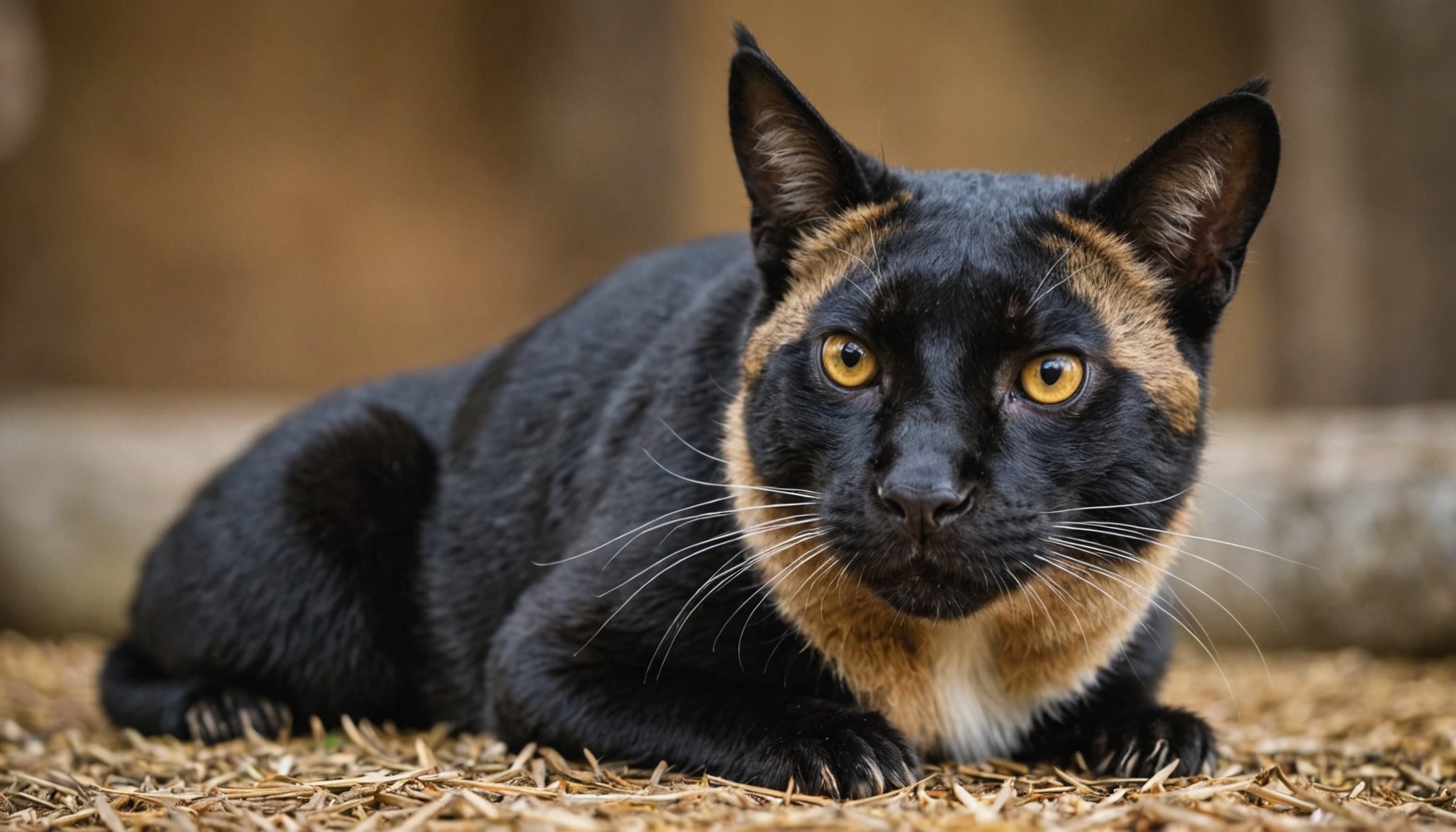Overview of Imported Animal Diseases in Exotic Pets
Imported diseases, a significant concern in the realm of exotic pets, pose notable challenges for veterinary professionals in the UK. These diseases, arriving through the international pet trade, can affect various exotic species, prompting substantial concerns in the veterinary field. Imported diseases are illnesses that infiltrate a location from external regions, carried by wildlife or domestic animal exchanges. In the context of exotic pets, these diseases can introduce new pathogens previously unencountered in local animal populations, complicating veterinary response efforts.
Exotic pets, including reptiles, birds, and small mammals, are particularly susceptible to these diseases due to their unique physiology and care needs. For instance, reptiles imported from different climates can harbour illnesses not commonly seen in native contexts. Disease importation trends have shifted over the years with varying pet popularity and global trade patterns. Historical records show an increase in disease cases with the rise of exotic pet keeping, highlighting the importance of robust veterinary protocols.
In the same genre : Tailoring sleep solutions: expert insights on shift work sleep disorder from uk specialists
Understanding these trends enables veterinarians to prepare for and mitigate risks associated with exotic pet healthcare. The continuous evolution of imported diseases necessitates ongoing research and adaptation of veterinary practices to effectively manage this dynamic and complex field.
Common Imported Animal Diseases in Exotic Animals
Imported diseases represent significant challenges for both exotic pets and the veterinary professionals caring for them. These common diseases in exotic pets can manifest in various ways, making veterinary diagnosis crucial. Reptiles, birds, and small mammals, frequently traded across international borders, are prone to infections such as Salmonellosis, a bacterial disease often carried by reptiles and affecting both animals and humans. Birds may suffer from Avian Chlamydiosis, which requires quick detection for effective management.
In the same genre : Revolutionizing cancer care in the uk: how precision medicine is transforming targeted treatments
Overview of Key Diseases
Understanding the prevalence of diseases in exotic animals aids veterinarians in early recognition and treatment. Often, clinical signs and symptoms include lethargy, appetite loss, respiratory issues, and unusual discharges, reflecting the urgent need for accurate veterinary diagnosis.
Clinical Signs and Symptoms
Identifying clinical signs like skin lesions, abnormal moulting, or behavioural changes is paramount for early diagnosis. Epidemiology and transmission patterns reveal that these diseases can spread through direct contact or contaminated environments, posing risks to pet owners and other animals.
Epidemiology and Transmission Patterns
Veterinarians must stay vigilant, utilising detailed diagnostic processes to contain outbreaks. Recognising risk factors such as inadequate quarantine measures or improper handling underscores the importance of stringent healthcare protocols, ensuring the welfare of exotic pets and minimising disease transmission.
Innovative Diagnostic Techniques
The rise of diagnostic techniques has revolutionized exotic pet care, driving advancements in veterinary innovation. In today’s fast-paced world, having access to cutting-edge tools is paramount to disease identification. Understanding how these techniques apply can be crucial for veterinarians working with exotic pets.
Advances in Laboratory Testing
Next-generation laboratory technologies have transformed the face of veterinary diagnostics. Tailored to address the unique needs of exotic species, these techniques maximise diagnostic precision. For instance, polymerase chain reaction (PCR) testing has enabled rapid identification of pathogens, supporting timely treatment decisions. Moreover, specialised biochemical panels can detect subtle physiological abnormalities often missed with traditional methods.
Imaging Techniques
Imaging has become a cornerstone in disease diagnosis, offering detailed insights into the health of exotic pets. Utilising tools such as ultrasound and advanced radiography techniques allows for non-invasive examination of intricate anatomical structures. Technologies like CT and MRI have significantly improved the ability to assess underlying conditions, providing promising avenues for enhanced diagnosis and treatment planning.
Field Diagnostic Tools
For practical, on-site evaluations, portable diagnostic tools are indispensable. These instruments enable quick assessment and immediate decision-making in varied environments, extending care beyond traditional settings. Handheld devices capable of delivering results promptly enhance veterinarians’ responsiveness, directly contributing to the well-being of exotic pets.
Treatment Strategies for Imported Animal Diseases
Proper treatment strategies are crucial in managing imported diseases in exotic pets, ensuring effective care and containment. Adopting comprehensive veterinary protocols aids in addressing these health challenges, accommodating the varied needs of different exotic species.
Medical Management Approaches
Pharmacological treatments tailored to exotic animals play an essential role, as they are specifically designed to target the pathogens and physiological responses unique to these species. Accurate diagnosis leads to the selection of appropriate medications, which might differ significantly from treatments used in common domestic animals due to the distinctive biochemistry of exotic pets.
Surgical Interventions
In cases where medical management proves inadequate, surgical interventions can offer a viable solution. Such surgical options are carefully considered, balancing the risks and benefits unique to each species’ anatomy and health condition. Innovations in minimally invasive procedures have further expanded the possibilities for safe, effective treatment, fostering positive outcomes and quicker recovery.
Complementary Therapies
Complementary therapies offer additional support, enhancing traditional treatments through holistic approaches. Techniques such as acupuncture and physiotherapy serve as adjuncts, promoting overall wellness and accelerating recovery. The integration of these therapies in veterinary medicine exemplifies a holistic approach, emphasizing comprehensive care and support for exotic pets battling imported diseases.
Case Studies: Successful Interventions
Exploring case studies provides valuable insights into the intervention success achieved through veterinary best practices. These real-world examples illustrate the application of innovative techniques, highlighting the pathways to successful outcomes. Detailed analyses of specific cases enable a deeper understanding of interventions, revealing effective strategies and common pitfalls.
Detailed Analyses of Specific Cases
In one notable case, a reptile with a mysterious illness was diagnosed using advanced imaging and PCR testing. The precise identification of the pathogen allowed for a targeted treatment plan, underscoring the significance of accurate diagnostics. This approach revealed the complexities involved in treating similar exotic species and enhanced the veterinarian’s ability to address unique health challenges effectively.
Lessons Learned and Best Practices
Success stories from these case studies not only enhance veterinary protocols but also inform future practices. The importance of timely diagnosis, comprehensive treatment strategies, and interdisciplinary collaboration are recurrent themes. These experiences help refine approaches, fostering better health outcomes for exotic pets.
Collaborative Efforts in Veterinary Care
Collaboration among specialists is pivotal in exotic pet care. Engaging experts from various fields enhances treatment strategies, ensuring holistic care. These synergies illustrate how interdisciplinary efforts can drive improvements and foster resilience against emerging health threats in exotic animal medicine.
Guidelines and Resources for Veterinarians
In the complex world of veterinary care for exotic pets, veterinarians constantly seek guidance and access to key resources. Professional veterinary associations and networks provide critical support, offering platforms for knowledge exchange and advancement in pet care practices. These organizations not only facilitate continuing education opportunities but also foster a collaborative environment where vets can share experiences and solutions.
Veterinary Associations and Networks
Some notable associations include the British Veterinary Association (BVA) and the Association of Exotic Mammal Veterinarians (AEMV), which offer indispensable resources and community support. Membership in such associations enables professionals to stay updated with current trends, guidelines, and challenges in exotic animal care.
Recommended Reading and Research
For those aiming to deepen their expertise, critically acclaimed publications and current research are invaluable. Peer-reviewed journals and authoritative books provide insights into disease management, innovative treatment strategies, and emerging health threats confronting exotic pets.
Continuing Education Opportunities
Workshops and seminars tailored to exotic pet care are vital for ongoing professional development. Certification programs and online courses facilitate skill enhancement and broaden the scope of veterinary medicine, equipping practitioners with the latest knowledge and techniques necessary for addressing unique challenges in managing exotic animal health.
Future Directions in Veterinary Care for Exotic Pets
As we cast our gaze into the future, it’s essential to consider the emerging challenges in exotic pet health management. Growing public interest in exotic pets continually introduces new threats to animal welfare, necessitating agile responses from veterinary professionals. Notably, the intersection of globalisation and wildlife trade remains a significant driver of these challenges, as new species and potential pathogens enter the market.
Innovations anticipated in diagnostics and treatment are expected to reshape the landscape of veterinary medicine. Exciting developments in areas such as gene therapy and bespoke pharmacology promise tailored treatments for specific conditions affecting exotic pets. These advancements underline the role of precision medicine in achieving better health outcomes and highlight the need for continuous research and technology integration within veterinary practices.
Veterinarians will increasingly engage in public health and conservation efforts, expanding their roles beyond traditional care paradigms. Addressing issues like habitat loss and zoonotic disease transmission is critical. Thus, building strong interdisciplinary collaborations will not only enhance care for these animals but also protect ecological and human health, promoting a holistic approach to veterinary medicine. This new trajectory underscores the evolving responsibilities and skills required in the dynamic field of exotic pet care.











